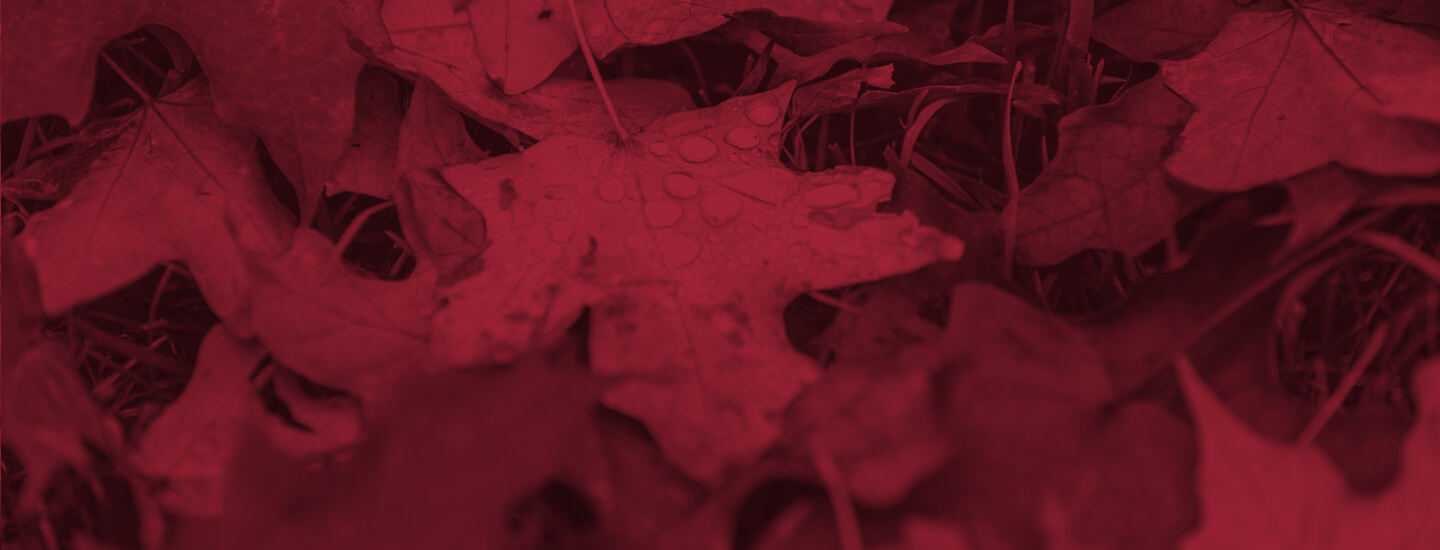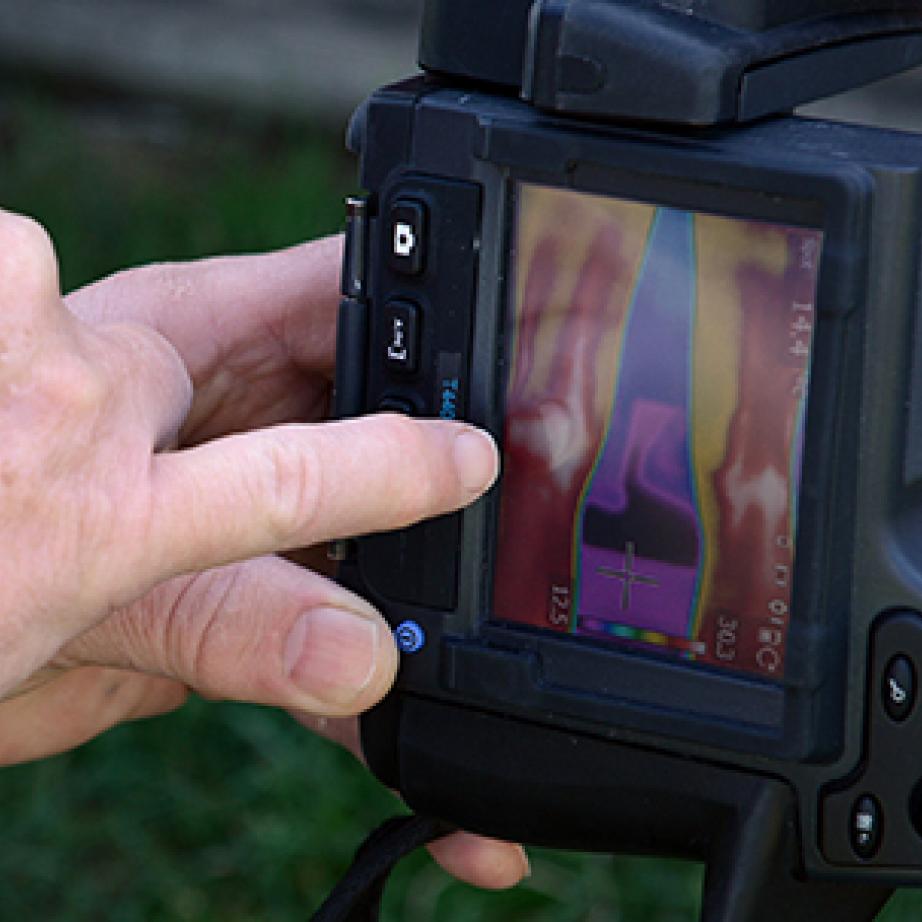Thursday, Jun 4, 2015
by Adam Grybowski
No one in Rider history has run the indoor mile, the 1,500 meter, the 3,000 meter and the 3,000-meter steeplechase faster than Emily Ritter ’15. To help her achieve those feats, the secondary education and biology double major relied on her natural gifts and a rigorous training routine.
This year, the record holder added an unusual element to that routine.
Like any elite athlete, Ritter was vulnerable to injury. To help her discover and track her potential for injury, she began working in the fall of 2014 with John Adamovics, a research fellow and priority adjunct professor in the Department of Chemistry, Biochemistry and Physics who has devised a novel way to detect most of the common injuries runners experience.
Because injured muscles radiate heat, infrared cameras have the ability to “see” where injuries are occurring in the body. The technique provides physiological information, whereas other commonly used imaging techniques, such as MRI or CAT scans, provide anatomical information. One obvious advantage of IR imaging is that an athlete does not need to visit a hospital and wait days for results. This camera provides real-time information on-site. “This is a cheap, effective way to get feedback instantly,” says Robert Hamer, the head coach of the Rider men's and women's cross country and track & field programs.
Adamovics says he is the sole scientist in the United States to adapt this insight and technology for this particular use. Peering through the lens of his infrared camera, he has spent the better part of the last year assessing the injuries of Rider track athletes like Ritter. Over time, the collection of images, which Adamovics stores on his computer, tell the story of how injuries like hamstring pulls and shin splints progress or regress over time.
Infrared cameras hold the potential to revolutionize the way athletes monitor, track and cope with injury, Adamovics says. He has recently submitted his findings toThe Journal of American Sports and Exercise Medicine for publication. The ideal use of the technology, he says, would be to identify the first stage of an injury before the athlete has even begun to feel symptoms. Indeed, Hamer recalls the camera detecting hot spots in the legs of his athletes before they reported pain or discomfort.
“When John approached me with this idea, I found it kind of fascinating, though I wasn’t sure where it would lead,” Hamer says. “We’re always looking for additional tools to evaluate athletes and help them become better.”
To identify the risk of injury, coaches and trainers rely on feedback from athletes. The method is notoriously imprecise because it’s open to interpretation and, occasionally, deception. Some runners may choose to hide their injuries to avoid being sidelined. Adamovics believes his method has the potential to provide a more reliable, quantitative approach to the detection of injury.
By measuring the temperature of muscles, Adamovics can monitor the severity of injuries over time and potentially alleviate the sequence of events that lead to injury becoming worse and worse. “There’s no way for a trainer to do this quantitatively,” he says.
Half of all athletes will deal with injuries at some point in their career, Adamovics says, a number that has not decreased over the past 20 years. He equates the frequency of sports injuries for athletes to an epidemic.
“Overuse injuries are a big thing for us, specifically with the cross-country and distance runners,” Hamer says.
Some injuries can end a season or a career, he notes. More often, common injuries like hamstring pulls or shin splints force runners off the track, derailing the rigorous training regiments that make them successful. “Endurance athletes need that everyday training to build up their fitness,” Hamer says. “It hurts their confidence too when they can’t train.”
Adamovics was injured as a runner in college, and he has seen his son, who competes on Iona College’s track and field team, experience similar injuries. “I became so much more aware of injuries and how little can be done for them,” he says.
After a conversation about another injured track athlete (this time a colleague’s daughter), “It dawned on me that injury creates inflammation and heat, and the way to detect that is through an infrared camera,” Adamovics says. He scoured the academic literature on the subject and found little about its use on humans, though the technique apparently has been previously adopted to detect injuries in horses.
Adamovics, who received his doctorate in chemistry in 1976 from Colorado State University, conducts academic research on radiation and oncology. “The level of complexity is enormous,” he says. “People are drawn to infrared a lot more than anything I’ve done. Once you take images of athletes, crowds of students gather to watch the screen. People love it. This just has such appeal as well as a very practical use.”
So far, Hamer has viewed the implementation of infrared cameras as an experiment. He has not, for example, sidelined a runner because of the data they provide. But he does appreciate the technology’s potential. "Trainers are still the number one tool we use,” he says. “What John provides us with is additional information, and as we get more, I think it’s going to be extremely useful.”
Adamovics posted this video, captured through an infrared camera, on YouTube of a twitching leg muscle.


